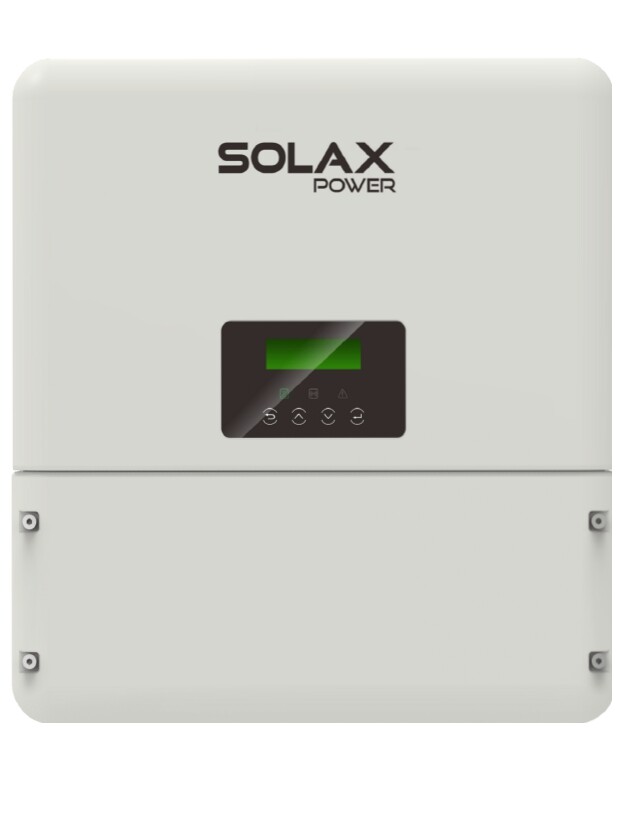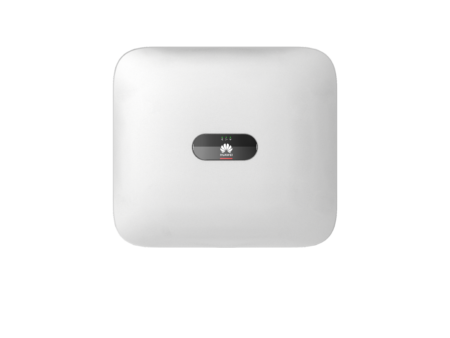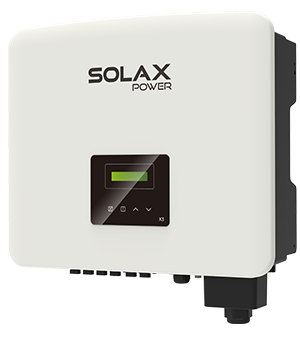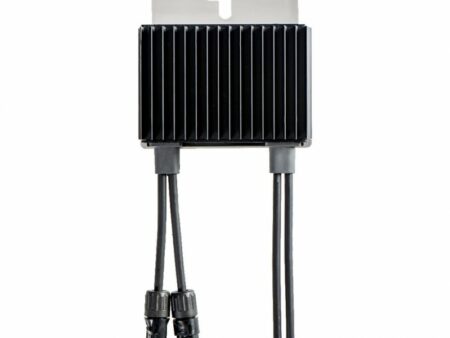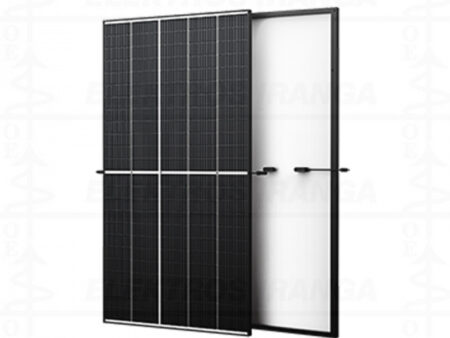Description
SolaX X3 Hybrid Power Inverter – a smart investment for both business and home
SolaX X3 is the perfect solution for those who want to switch to renewable energy or to optimise the performance of a solar power plant. The SolaX X3 can be integrated with a battery for storing excess energy, so you can use the energy produced and stored according to your needs. Thanks to its smart features, the device ensures efficient operation of the solar power plant. By combining two devices into one, the SolaX X3 becomes a smart investment for business and home at an affordable price.
Benefits of the SolaX X3 Hybrid smart inverter
- Electricity is always. The inverter will be able to operate even in the event of a power failure thanks to an emergency power supply or EPS switch. In this case, the solar energy already stored in the batteries will be used (the internal electricity grid must be adapted for this to work).
- Manage power according to your needs. Integrated export controls make it convenient and efficient to set limits on energy exports.
- Convenient communication. The SolaX X3 inverters are integrated with a WiFi system that allows both control and monitoring of the device remotely.
- Extra large space for storing excess energy. Combine the batteries with each other to achieve the required energy capacity.
- The SolaX inverter can be installed not only indoors, but also outdoors, as it is dust and waterproof (IP65 standard).
Main technical specifications of the SolaX X3 Hybrid
- Three-phase
- Power from 5 kW to 10 kW
- Efficiency up to 97%
- Manufacturer’s warranty from 5 to 10 years
- Double BMS protection
- Remote monitoring and job control
- Can be integrated with EPS (Emergency Power Supply)
How does the system work at home?
More information on SolaX X hybrid inverters.
SolaX X3 hybrid power converter part of X-ESS G4
If you want a complete hybrid system, you will need to buy:
- Storage battery 3.0 (at least 2 units)
- BMS – Battery Management System – for safe system operation.
Smart Meter
– to control your energy flows.- Accessory kit – if you buy more than 2 batteries.
- EPS unit – if you want the system to work in emergency mode in the event of a power failure.
Benefits of a hybrid solar power plant:
- Significantly lower electricity costs
- Can act as a UPS – supplying power in case of a power outage on the ESO grid
- During spring and summer, you are unlikely to use any energy from the ESO grid (with the right system, all electricity would be free)
- Can be used as a stand-alone power plant in locations where there is no connection to the ESO electricity grid
Disadvantages of a hybrid solar power plant:
- Sufficient space must be available for mounting batteries
- Relatively high investment, longer payback period
- Battery lifetime 7-15 years, decreasing battery capacity
How do I choose a battery for my home?
Hybrid solar power plants with storage tanks operate automatically. The owner only needs to select the initial parameters of the system, to complete the system to meet the needs.
What does kWh mean? For example, a 3 kWh battery means that if you load the grid with 1 kW, it will be able to provide power for up to 3 hours. With a corresponding system load of 3 kW, the battery would be able to supply up to an hour of power (it is important to note the maximum power that the battery can deliver, which depends on the manufacturer).
- It is worth remembering that it is advisable to set aside at least 20% of the total amount of the budget. reserve battery capacity. We recommend that you do not discharge the battery by more than 20% to ensure the longevity of the battery. This means that you will only use 80% of the battery for your needs. For example, if you buy a 5 kWh battery for a hybrid solar power plant, you will only have 4 kWh of capacity.
- The performance of the system can be set according to your energy consumption habits (when the battery is charged, when it is discharged). For example – if you have a 2 tariff energy plan (with cheap electricity at night) – it’s worth charging at night and using cheaper energy during the day. It is therefore a good idea to have an idea of how much electricity you will need for the day. In summer, the battery must be charged during the day, when the solar modules generate free electricity. Power should only be directed to the mains when your battery is charging. You will use the battery power in the evening when no electricity is generated.
- It is also worth taking into account the space occupied by the battery. Our systems are easily fixed to the wall in a single column up to (see illustrations below).
- Batteries for home energy can also be mounted outdoors, on the facade. It is important to ensure that the system is properly ventilated, sheltered and covered from precipitation.
Hybrid solar power plant operating mode options
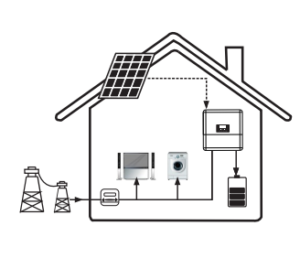 |
Type of operation: for indoor use (with solar power). | Priority: load > battery > network. The right type for use with a solar power plant, where low-cost grid storage (or charging at night) and high electricity costs are available. In this case, the energy generated by the solar power plant is first directed to where it is located (for home use), then the excess energy is directed to the battery and when the battery is charged, the excess energy is directed to the grid. |
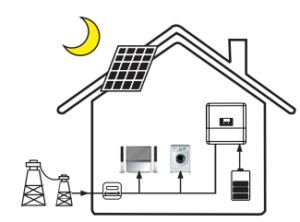 |
Type of operation: for domestic use (without solar power plant) | In this case, the battery will be charged at the time when you have the lowest electricity cost and discharged at the time of the highest cost. |
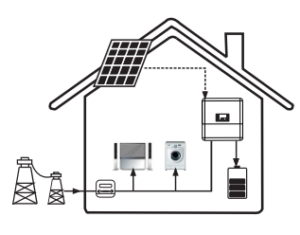 |
Type of operation: load mode. | In this case, the system works as follows (a) battery > load > network (when charging) and (b) load > battery > network (when discharging). In this case, the battery is charged during the period of lowest electricity price (e.g. at night) and discharged during the period of high electricity price. |
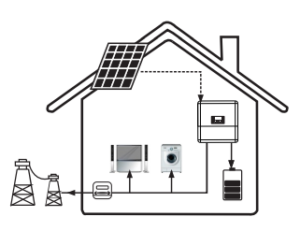 |
Type of activity: supply to the network. | The system works like this: load > grid > battery. The type is suitable when a favourable tariff is available for supplying electricity to the grid (e.g. it is possible to recover the electricity at a low storage fee or to sell electricity to the grid). In this case, the energy demand is met first, then the grid is loaded, and only then the battery (this type is not yet favourable for the Lithuanian market, unless the feed-in tariff is available). |
 |
Type of operation: standby mode. | The system works like this: battery > load > network. A favourable operating type for locations with frequent power outages. The battery is always charged sufficiently to ensure that the battery is always charged. For the system to work properly, it is necessary to modify the network by providing a network disconnector. |


